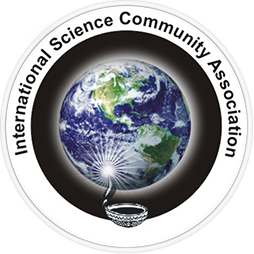International Young Scientist Award
Guidelines, Eligibility and Selection Criteria
- The upper age limit of the young participants for the award is 40 years as reckoned on December 31, 2026.
- Registered/Enrolled in a college/university/lab/institute for Ph.D./Research scholars/project fellow or from any discipline.
- The duly filled registration form, Abstract (not exceeding 200 words) along with full length research paper must reach by email to iscaonference@isca.net.co , iscaconference@gmail.com, not later than 30th November 2026.
- The abstract/Paper submitted must be a single author paper and the research work has to be certified by the Guide / Supervisor / Investigator / Head.
- The candidate should give an undertaking that the paper being submitted has not been published in any journal or presented in any other Conference / Seminar / Symposium or submitted for consideration of any award.
- Young Scientist can present only one paper in any one Section (and no second paper will be permitted in the same or any other topic in any other section).
- The papers submitted will be subjected to verification for authenticity. Plagiarism shall lead to cancellation of award.
- The final selection for the Awards will be made by a duly constituted committee and the awards will be given during the valedictory ceremony.
- The full length research papers once submitted/accepted for the above award cannot be retrieved.
- Each nominee is required to make a brief presentation (15 minutes) about his/her research work before the concerned Sectional board of members. This may be followed by 5 minutes question-answer session / discussion
- No nomination will be considered in absentia.
Essential at the time of presentation submit the following documents to the sectional board committee.
- Bio-data (CV) with photograph.
- Registration fee receipt of ISC- 2026.
- Identity card/proof of affiliation with University/Institution/College/Lab.
- Copy of full length research paper.
- Undertaking of the non submission of the work signed by the young participants himself/herself.
- Letter of consent from the Head of the Institution/Department/Supervisor/Lab/University.
Evaluation Rules for International Young Scientist Award - For Best Oral Presentation
| CRITERION | Max Mark |
| Correlation with the Theme | 20 |
|
|
| Introduction and Background | 15 |
|
|
| Study Design, Results and Discussion | 20 |
|
|
| Conclusion | 15 |
|
|
| Questions and Answers | 10 |
|
|
| General Communication and Presentation Skills | 20 |
|
Evaluation Rules for International Young Scientist Award - For Best Poster Presentation
| CRITERION | Max Mark |
| Correlation with the Theme | 20 |
|
|
| Methodology and Findings | 20 |
|
|
| Content and Presentability | 20 |
|
|
| Conclusion | 20 |
|
|
| Questions and Answers | 20 |
|

